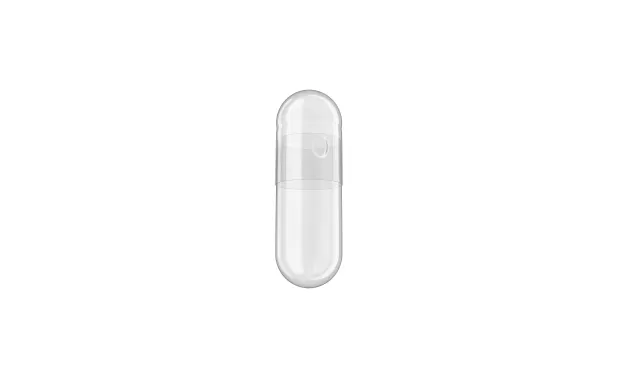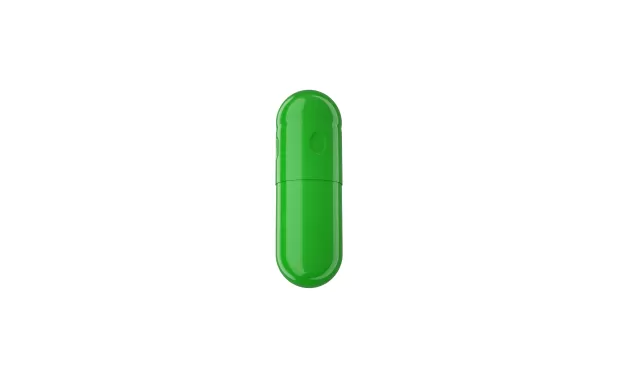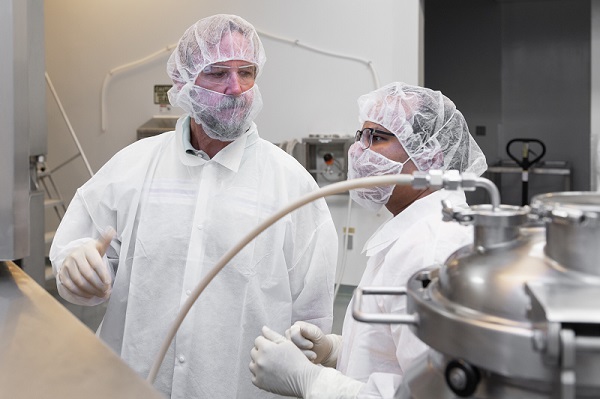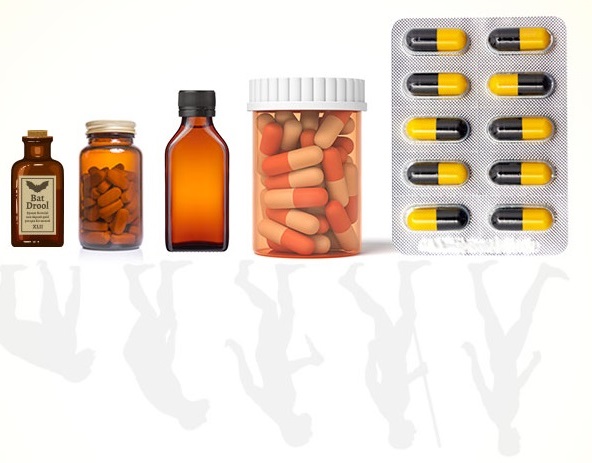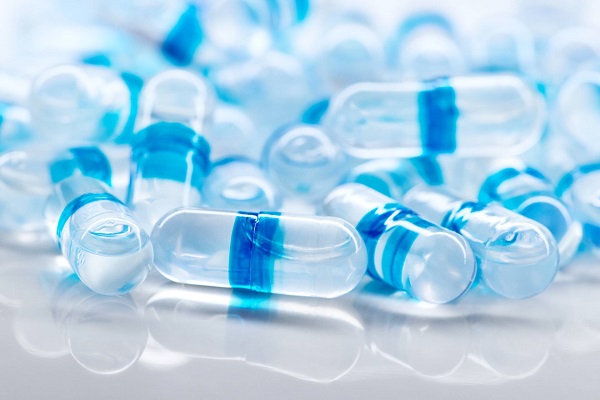Standards for nutra supplements are being rewritten – but not by regulators

Clean label context: the culture of ingredient scrutiny
The clean label movement began as a voice for consumer concerns about ingredients in foods and beverages. Since then, its momentum has impacted the dietary supplements sector too.
While the term "clean label" lacks a formal definition, it is widely interpreted to mean:
- shorter ingredient lists with natural and recognisable ingredients
- free from synthetic colours, artificial sweeteners, preservatives and other chemical-sounding additives
- free from contaminants like heavy metals, antibiotics and pesticides.
North America and Europe dominate the global supplement market, and are home to some of the most conscious consumers. According to a 2023 study by the Council for Responsible Nutrition, 75% of Americans take supplements, and over half the population are regular users1. A 2022 Ipsos study found that 56% of European consumers prioritise claims like ‘natural’ and ‘non-GMO’, while 74% rely on listed ingredients to inform purchase decisions2.
Apart from safety, consumers also want products to align with their cultural and dietary preferences. Labels increasingly feature terms like ‘vegan’, ‘halal’, ‘kosher,’ and ‘plant-based’ to meet these expectations.
While regulators aren’t driving these alignments, retailers are. They’re embedding “clean” into blacklists, algorithms, and shelf decisions.
Retailer pressure and retailer promotion
Whole Foods Market is a longstanding leader among American wellness foods chains, with stringent quality standards. It has placed storewide bans on supplements containing artificial sweeteners, certain synthetic colours and other additives since at least 2003. In total, there are 150+ ingredients on “The No List”, which is continually updated in light of new research3. The factors considered go beyond safety. Whole Foods evaluates the purpose of the ingredient, whether it is necessary, and if higher quality alternatives are available4.
One of the UK’s largest supplement retailers, Holland & Barrett restricts ingredients commonly used in health supplements, including plasticisers, preservatives and coating agents. Some of their stores have additionally banned certain artificial sweeteners, synthetic tablet binders and disintegrants, among others5, 6.
These frameworks already align with clean label ideals, and will only become increasingly exclusionary as more natural alternatives are discovered. Thus, for many brands relying on conventional ingredients, access to consumers through the biggest supplement stores is challenging.
Digital marketplaces are also important channels for brands to reach customers. iHerb, offering wellness products to 12 million users across 180+ countries, has long prioritised product visibility through extensive preference filters: non-GMO, vegan, preservative-free, halal, and many more. Vitacost, another popular online supplement store, offers similar filter options. The product pages place an emphasis on ingredient transparency and certification tags, which often play a role in promotion.
While these standards help conscious consumers, they are no longer limited to niche platforms. Mainstream retailers are following suit.
What’s next: clean becomes the new normal
The Target Clean program (2022) is a recent move by a mainstream retail giant in the US, which now includes OTC medicines and supplements. It is a consumer education initiative to promote products using the Target Clean symbol, indicating the absence of synthetic colours, artificial sweeteners and flavours, BHA, BHT and others7. Similarly, Amazon allows users to filter supplements by numerous dietary preferences and “free-from” attributes. These developments indicate that non-specialist retailers are no longer treating conscious consumers as niche, and hint at broader shifts in retail policy beyond traditional wellness channels.
Across all platforms, certification tags, filters and search algorithms influence product visibility, essentially making “clean” formulations algorithmically favoured. Together with retailers, digital platforms are creating a dual-front pressure on supplement brands: one at the point of purchase, the other at the point of discovery. The convergence is soft-enforcing clean label as a baseline. If brands are under-ranked – or worse, excluded – from these channels, they must invest heavily in brand-building elsewhere just to remain visible to their target customers.
Practical considerations for formulating for a clean label market
In response to these challenges, many new products are being developed without traditional ingredients, while established brands are reformulating. Choosing the right dosage form is critical, as each format carries formulation realities that impact marketing, consumer perception, and supply chain decisions.
Gummies: clean vs stable
Gummies are popular for their consumer appeal, but formulating a clean version is far from straightforward. Natural sweeteners like stevia require aftertaste masking. Honey and fruit extracts, while appealing, can alter texture and raise moisture levels, shortening shelf life11. Removing artificial preservatives adds to these challenges; plant-based antioxidants such as vitamin C are sensitive to heat and light12. Switching to plant-derived ingredients doesn’t just complicate formulation – it also raises material costs.
Soft gels: manufacturing challenges
Soft gel capsules are ideal for oils and liquid actives, but most rely on gelatin⁹ – limiting vegan, halal, and allergen-free claims. Plant-based alternatives like carrageenan, pectin, and starch exist, but come with manufacturing challenges. These viscous gels need high temperatures and pressures, driving up production costs⁸, ¹⁰. Achieving the right shell strength and flexibility, especially with carrageenan-starch blends, requires precise process control⁸. Starch’s high carbon content, if unpreserved, can also promote microbial growth⁸.
Tablets: batch-to-batch inconsistency
Tablets are compact, scalable, and often cheaper. However, they necessitate multiple excipients like binders, disintegrants, coatings, lubricants, etc. Using plant-based alternatives for all these functions introduces significant influence of agricultural variability13. This can result in inconsistent moisture levels, variable flowability and disintegration times, and even tablet cracking or chipping. Natural excipients are also more sensitive to light, heat, and humidity13, and their organic content raises microbial risk14. They are also less likely to be as compressible as synthetic excipients. These challenges may require more extensive packaging, impact shelf stability, and ultimately affect consumer trust.
While it is possible to find clean alternatives to numerous functional excipients, it may not be the smartest approach.
| Dosage forms | Key challenges | ||||
| Gummies |
| ||||
| Softgel capsules |
| ||||
| Tablets |
| ||||
The clean label solution
Some dosage forms are more compatible with clean label goals, and hard capsules lead the way. Unlike gummies, tablets, or soft gels, they reduce the need for excipients that serve the dosage form, and not the active.
ACGcapsTM H+ takes this further – as the world’s only capsule with Clean Label Project certification. Its shell contains nothing but plant cellulose and water, delivering clean, minimal formulations. It also supports a wide range of fills (including liquids and oils) helping brands accelerate time-to-market across product lines. HPMC shells offer superior mechanical strength, ensuring product integrity throughout the supply chain – all the way to the consumer.
Proprietary ACG technologies like natural ACGCapsTM NTone colours and TiO₂-free ACGCapsTM TSafe opacifiers accompany the capsule to uphold the clean label promise. Alongside them, our vegan capsule printing inks – the world’s first – enhance product differentiation15.
| Benefits of ACGcapsTM H+ | |
| |
In short, ACGcapsTM H+ combines the strengths of all major supplement formats – without the trade-offs.
Conclusion
Clean label is fast evolving from a differentiator to an expectation, with retailer standards, digital platform algorithms, and third-party certifications tightening. Brands that prioritise cleaner formulations will be more future-proof as this soft mandate gradually approaches baseline status.
While challenges remain across dosage forms, hard capsules – and innovations like ACGcapsTM H+ capsules – present an easier, faster and cleaner method to meet consumer preferences. Embracing these advancements will enable brands to deliver trusted products that resonate.
References
- Council for Responsible Nutrition. “Three-quarters of Americans take dietary supplements; most users agree they are essential to maintaining health, CRN consumer survey finds.” 2023.
https://www.crnusa.org/newsroom/three-quarters-americans-take-dietary-supplements-most-users-agree-they-are-essential - Ipsos, Food Supplements Europe. “Consumer survey on food supplements in the EU.” 2022.
https://foodsupplementseurope.org/wp-content/uploads/2022/07/FSE-Consumer_Survey-Ipsos-2022.pdf - Whole Foods Market UK. “Supplement standards.”
https://www.wholefoodsmarket.co.uk/supplement-standards - Whole Foods Market. “The No List.”
https://wholestory.wholefoodsmarket.com/the-no-list/ - PR Newswire. “World's largest product discovery platform for retailers, RangeMe, expands into Europe, launching across Benelux.” 2021.
https://www.prnewswire.com/news-releases/worlds-largest-product-discovery-platform-for-retailers-rangeme-expands-into-europe-launching-across-benelux-301393530.html - RangeMe. “Holland & Barrett Benelux FAQ.”
https://help.rangeme.com/hc/en-us/articles/4407258148759-Holland-Barrett-Benelux-FAQ - Target. “Target Clean.”
https://www.target.com/c/target-clean/-/N-p4n12Z55pbmZ55oxdZfwtfr - F. J. Palomero-Hernández, M. Á. Caballo-González, F. J. de la Mata, S. García-Gallego. “Sustainable Shell Formulations as Alternative to the Conventional Soft Gelatin Capsules in Pharmaceutical and Nutraceutical Applications. A Review.” Macromol. Mater. Eng. 2025, 2500003.
https://doi.org/10.1002/mame.202500003 - Research and Markets. “Softgel Capsules Market Opportunity, Growth Drivers, Industry Trend Analysis, and Forecast 2025-2034.” 2025.
https://www.researchandmarkets.com/reports/6060709/softgel-capsules-market-opportunity-growth - Research and Markets. “Vegetarian Softgel Capsules Market by Material, Distribution Channel, Application - Global Forecast 2025-2030.” 2024.
https://www.researchandmarkets.com/report/vegetarian-softgel-capsules - Tarahi, Mohammad et al. “Current Innovations in the Development of Functional Gummy Candies.” Foods (Basel, Switzerland) vol. 13,1 76. 25 Dec. 2023, https://doi.org/10.3390/foods13010076
- Yin, Xin et al. “Chemical Stability of Ascorbic Acid Integrated into Commercial Products: A Review on Bioactivity and Delivery Technology.” Antioxidants (Basel, Switzerland) vol. 11,1 153. 13 Jan. 2022.
https://doi.org/10.3390/antiox11010153 - Tiwari, Nityanand & Rai, Vishal & Singh, Shekhar. (2024). “A Review on Herbal Excipients in Pharmaceutical Formulations.” 4. 18-26. https://www.researchgate.net/publication/387721347_A_Review_on_Herbal_Excipients_in_Pharmaceutical_Formulations
- Arpita Singh, Nidhi Gupta, & Amresh Gupta. (2021). “A Review On Herbal Excipients.” International Journal of Indigenous Herbs and Drugs, 05-08. https://doi.org/10.46956/ijihd.vi.111
- Contract Pharma. “ACG Capsules introduces full vegan printed capsules.” 2025.
https://www.contractpharma.com/breaking-news/acg-capsules-introduces-full-vegan-printed-capsules/


 Go Back
Go Back